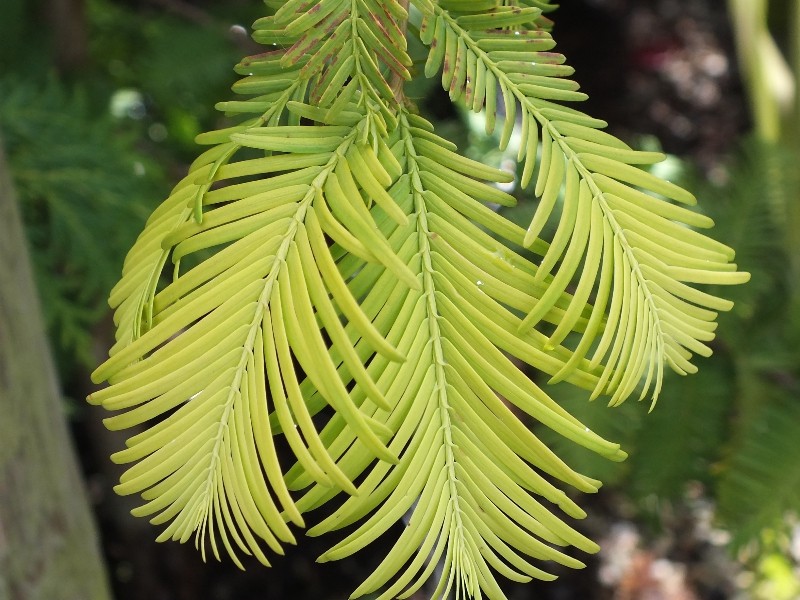

On Jul 15, 2016, Turgenev from Asheville, NC wrote: Please see my narrative under the normal species. I attached a few photos of my Goldrush DR’s. A slight north slope is loved in Tennessee. Likes moist well drained soil just like most trees.
Metasequoia glyptostroboides gold rush full#
Give full sun and perimeter room to grow. No difference in form or structure that I can tell so far.

My Goldrush / Ogon types grow every bit as fast as the species. My biggest Goldrush DR reached 36’ tall this year, as measured with my Swedish Digital Clinometer, and 9” diameter at breast height. I don’t think they became available till 2000+.

One of my favorite species ! My Goldrush / Ogon Dawn Redwoods are not nearly that old. I’ve been studying Dawn Redwoods since 1967, and growing them since 1979. On Sep 5, 2019, RandyAllen from White House, TN wrote: This plant is said to grow outdoors in the following regions: N/A: plant does not set seed, flowers are sterile, or plants will not come true from seed Regional Inconspicuous/none Bloom Characteristics: Grow outdoors year-round in hardiness zone Danger: USDA Zone 8b: to -9.4 ☌ (15 ☏) Where to Grow: By rights, it should probably be listed as Metasequoia glyptostroboides 'Ogon' GOLD RUSH to preserve its original cultivar name.Average Water Needs Water regularly do not overwater Sun Exposure: 'Gold Rush' was found as a seedling in a nursery in Japan where it was named 'Ogon' ('Golden Ogi' and 'Golden Mantel', also seen, are most likely translations.) Around 1993 Dutch horticulturist Peter Zweinburg of Boskoop, Holland obtained it and brought it into Europe for distribution under the name ‘Gold Rush’ ('Goldrush'). Trees will typically rise to 10-15’ tall over the first 10 years, eventually maturing over time to 70-100’ tall. It reportedly grows somewhat slower than the species. Foliage gradually turns orange-brown in fall. ‘Gold Rush’ is a cultivar that features soft, linear, feathery, fern-like foliage that is distinctively golden-yellow throughout summer. Specific epithet means resembling the genus Glyptostrobus. Genus name comes from the Greek words metra meaning with, after, sharing, or changed in nature and Sequoia to which it is related and to which fossil specimens were first referred. The twigs, needles and cone scales are in opposite pairs. Trees are monoecious, producing oval, light brown female cones (3/4” long) and pendant globose male cones (1/2” long). Foliage emerges light green in spring, matures to deep green in summer and turns red-bronze in fall. It features linear, feathery, fern-like foliage that is soft to the touch. Bark on mature trees is often deeply fissured. As the tree matures, the trunk broadens at the base and develops attractive and sometimes elaborate fluting. Seedlings grown therefrom were planted in front of the Lehmann Building at MBG in 1952 where they have now developed into large mature trees (70’+ tall). Seeds collected from the original site were made available to the Missouri Botanical Garden in 1947. However, it was not until 1941 that it was first discovered growing in the wild near the town of Modaoqi, China by Chinese forester, T. From fossil records, dawn redwood is known to have existed as many as 50,000,000 years ago. It is related to and closely resembles bald cypress ( Taxodium) and redwood ( Sequoia). Metasequoia glyptostroboides, commonly called dawn redwood, is a deciduous, coniferous tree that grows in a conical shape to 100’ tall.


 0 kommentar(er)
0 kommentar(er)
